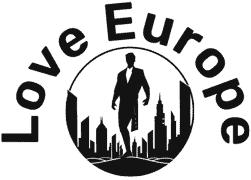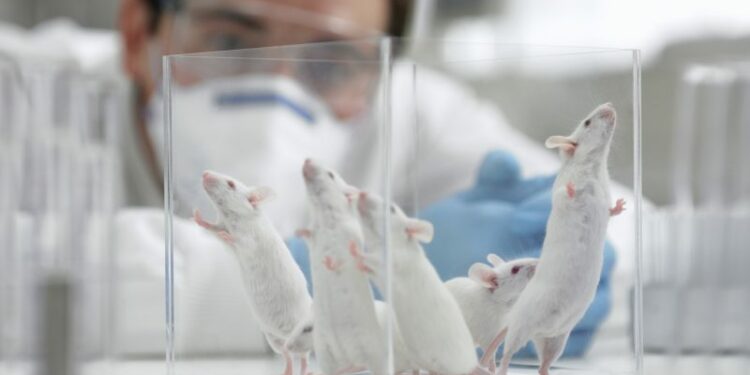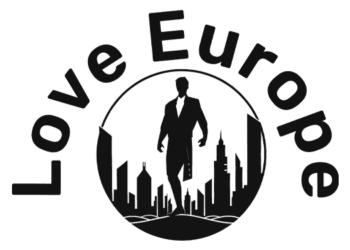The EU is about to get its first Commissioner specifically responsible for Animal Welfare. In the run-up to the European Parliament elections, animal welfare activists and farmers clashed on policy priorities. MEP Niels Fuglsang must navigate the minefield. Jennifer Baker spoke to Fuglsang about the key issues, including animal testing.
JB: How can we maximise non-animal methods (NAM) uptake under existing EU regulations?
NF: The use of non-animal methods for testing chemicals and pharmaceuticals is, of course, a scientific question. But it’s also a sociological question, in the sense that it is about industry and consumer organisations and the public realising that non-animal methods are just as safe. Perhaps even safer than animal methods. And I think we have a tendency to think that using animals will make things safer and it’s the best method we have.
But actually, we have good alternatives – simulations, computer models – that are able to test effects of different chemicals, and those methods are often safer and more accurate than the animal methods. Human beings are not rats; we don’t have the same biology as these animals that we test drugs on. So, it’s not necessarily a safe method to use different kinds of animals for testing because we might react in a different way.
Promoting non-animal methods is, of course, about legislation. It’s about funding new research, but it’s also about the industry and the consumer organisations and the journalists and the public and all of us understanding that we’re not jeopardising safety by not using animals. Quite the contrary, in many instances.
JB: The REACH regulation aims to protect human health and the environment through identification of potentially harmful chemical properties on the European market. One of its central aims was the promotion of alternatives to animal testing. Why has this potential not yet fully been embraced?
NF: I think this is largely a sociological question. We tend not to understand the benefits of these alternatives. So we can do a lot by taking the debate and trying to push the understanding of different testing methods – that’s quite a job to do!
But I do hope for the REACH Regulation to be updated. We have promises from the European Commission that will be updated, but they have not delivered so far. We need regulation setting up requirements or introducing requirements for using animals only if there really are no alternatives. And in most cases, there will be alternatives.
So we need an update of REACH. But when it comes to regulation, I think REACH is not sufficient right now. It doesn’t have the necessary requirements for using alternatives.
JB: Issues around NAM uptake exist under both EU Chemicals Regulations and EU Pharmaceutical Regulations. Which do you think needs more work, and do you see one of those areas as being more important than the other?
NF: I would not say that one of them is more important than the other. I think we use a lot of animals for both pharmaceutical and chemicals testing. Basically, I think we need to look at an update of the regulations in both areas with a requirement to only use animal testing if there’s no alternative. And we need to mean it!
I’ve been asked many times about whether I am willing to compromise safety in order to save animals or increase animal welfare. And I think that’s a false dichotomy. It’s a false opposition. I think there is no contradiction because we can have safe testing. In many instances, we have alternative safe testing methods, and we need to use them.
But of course, people also need to feel safe. If people are afraid that the products might not be safe, the industry will not use these non-animal methods. But I think both for pharmaceuticals and for REACH, we need this paradigm shift.
JB: Who are the most relevant stakeholders in increasing NAM acceptance in the food sector?
NF: In the food sector, I would say that we have a lot of vested interests that are very strong when it comes to the farming industry. The Commission withdrew planned initiatives and has not delivered. So, there are very strong vested interests. And I think we need the EU system to handle this – to bring along both farmers and animal welfare organisations. And I think we need to do this by reforming the Common Agricultural Policy.
We have a lot of money that we give to farmers via CAP, and we could say that these funds are dependent on certain animal welfare and environmental standards. So, we use the Common Agricultural Policy as an incentive to increase the standards for animal welfare and environmental protection. I think that’s the most important thing we could do to change this.
Right now, we’re basically funding a system that harms animals, harms the environment, and which makes people sick. So, I think we need to rethink that whole system. And fortunately, we have a chance to do that because in the coming years, the Parliament, the Commission and the Council need to reform the Common Agricultural Policy.
JB: And what about stakeholders in the chemicals or pharmaceuticals sector?
NF: When it comes to animal testing in chemicals and pharmaceuticals, I think we need the industry and the consumer organisations to come together. Because if you have industry introducing non-animal methods for testing, but you have consumer organisations worrying about whether products are safe – and that’s a completely legitimate concern – then it will be very hard to achieve change in this area.
So, we need to bring these stakeholders together in a dialogue. And I also think that’s what the Commission aims to do in the roadmap it’s working on, but those stakeholders are vital for change to happen.
JB: Cosmetic product regulation has prohibited animal testing since 2013. However, it only applies to consumer safety. Why are there fundamental differences in looking at worker or environmental safety? Can these standards be brought closer together, or can NAM be identified for the latter?
NF: Unfortunately, the ban on animal testing in cosmetics doesn’t work as well as it should. We still have a lot of animal testing related to cosmetics because if you use certain chemicals in both cosmetics and for other purposes, you will still be allowed to have animal testing.
I don’t think the distinction between consumer safety and, worker safety and environmental safety makes a lot of sense. We need to increase safety in all of these areas, and the highest standards should apply to all these sectors, as far as I’m concerned. But it doesn’t right now, and that’s one reason why we need a reform of these rules.
Here, I have high hopes for the new Animal Welfare Commissioner. We worked to have this Commissioner portfolio for a long time – more than 200 MEPs and more than 300,000 people signed the call. And now we have it, so when it comes to animal testing, and we put questions to the new Commission, I think it will be more difficult now for the European Commission to say, “It’s not really our responsibility.” Because now there’s one person with it literally in his job title.
JB: What are the regulatory steps to replace existing animal tests? The European Commission has released a roadmap – are all the right signposts in place?
NF: Well, I think, in some ways, we have momentum right now. You can see that more and more people care about animal welfare – at least according to the Eurostat surveys. But also when they decide what food products to buy. We have a European Commissioner for Animal Welfare, and I think we have the potential to change rules on animal testing.
Specifically on animal testing, we need to update the REACH regulation. We also need to update the different requirements on which kind of testing to make to bring that up to date. I think when it comes to the agricultural sector, there’s so much work to do. We have a proposal limiting the length of animal transports that needs to be negotiated, and I hope we can agree on something more ambitious than what the Commission has proposed.
For the new Commissioner, I would say animal testing will certainly be a question he will be faced with. But we also have a number of promises from the Commission that they have not delivered on when it comes to farming: phasing out cages in the farming sector, animal welfare labelling, animal welfare at the time of slaughtering, etc. I think in order to be a success, this Commissioner needs to deliver on these questions. I hope he will deliver a powerful agenda on animal welfare at the hearing, and then, of course, we’ll have to see what happens.
[Edited By Brian Maguire | Euractiv’s Advocacy Lab ]
Source link : https://www.euractiv.com/section/agriculture-food/interview/new-ambition-for-europes-animal-rights-agenda-but-testing-times-ahead/
Author :
Publish date : 2024-10-28 17:14:00
Copyright for syndicated content belongs to the linked Source.


